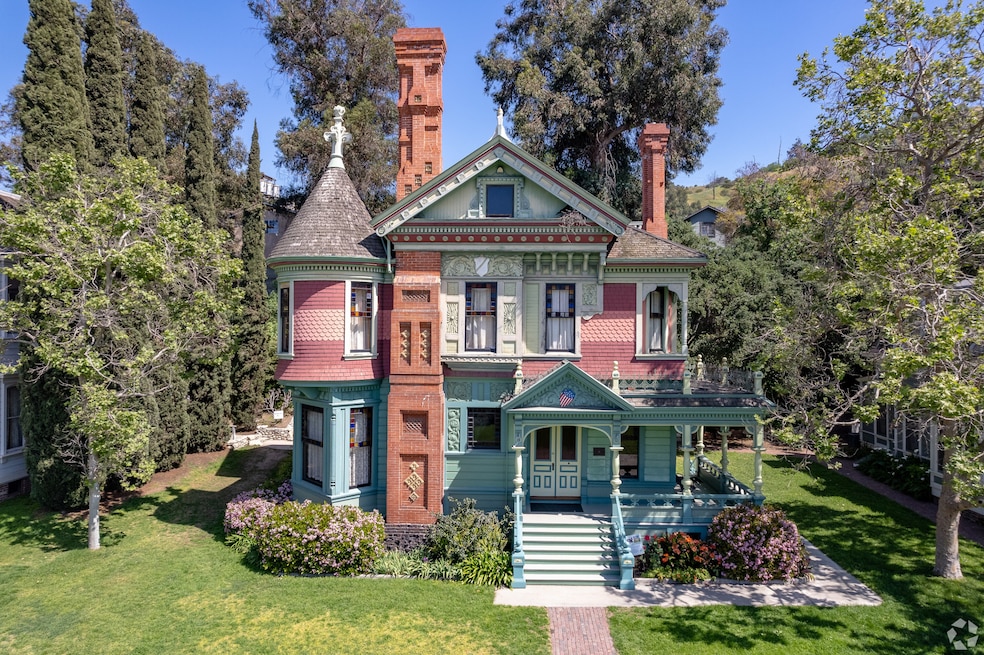Victorian homes have a little bit of everything going on.
The opulent style — often associated with intricate moldings and detailing — emerged on the architectural scene in the United Kingdom during Queen Victoria's reign, which began in 1837 and ended in 1901. By the 1850s, architects and homeowners in the United States had caught on, incorporating the aesthetic into the country’s residential landscape.
“They are typically very fancy, typically heavily ornamented,” said Brent Hull, founder of Hull Millwork & Hull Homes in Fort Worth, Texas. The firm offers design, construction and millwork services, and Hull specializes in historic moldings and carvings, drawing on a background in historic preservation.

In part, the elaborate Victorian style gained traction thanks to advances in building technology during the Industrial Revolution, which ended in the latter half of the 19th century. With machines bearing the brunt of the labor, builders could more easily and cheaply churn out ornate millwork and architectural details en masse, supercharging availability during rapid U.S. growth.
“You’re talking about a period where there’s a rising middle class and there’s a desire for them to show off their wealth,” Hull explained. “And, so, you end up with these house styles that are ornamented [and] a little bit 'McMansion-y,' maybe.”
‘Oh, that’s a Victorian’
Along with extravagant details, Victorian homes also feature high ceilings and taller, thinner windows made possible by advances in glass production. Inexpensive, ready availability also allowed designers to mix materials, combining siding and shingles — square, diamond and dog-eared alike — all within the same project.
The Victorian era spanned more than 60 years, enough time for sub-styles — including Gothic Revival, Italianate (known for brackets under the eaves), Second Empire (known for its multisided mansard roof), and Queen Anne (which often has an asymmetrical orientation and turrets) — to emerge. But, because these Victorian homes trade on a similar architectural language, parsing one sub-style from the other can be a Sisyphean task.

“If you look at them, sometimes they all look the same,” Hull noted. Some Victorian homes even boast 'Frankenstein-ified' elements of previous substyles, so you’ll see a structure that has Second Empire roofs with Italianate brackets and Queen Anne turrets.
“It’s not really a pure style in that you can look at [a house] and go, ‘Oh yeah, that’s a Queen Anne,’” Hull said. “But you can certainly look at it and go, ‘Oh, that’s Victorian.’”
CoStar reporter Matthew Mann explores the Victorians of Washington, D.C.'s LeDroit Park
Because the style was prominent during a time of growth and expansion across the U.S., examples of ornate Victorians exist around the country. San Francisco’s “Painted Ladies” are a city landmark, but Eureka, California, Louisville, Kentucky, Brooklyn’s Ditmas Park, and Atlanta’s Inman Park, to name a few, also offer pockets of the style.

‘A lot of bang for your buck’
Owning and updating a Victorian home can come with challenges: “It’s just very expensive,” Hull explained. Although born from a period of mass production, sourcing the ornate details and materials that give Victorian homes their highly wrought look can be costly and painstaking today. Homeowners also might have to contend with structural challenges common to older houses and with building materials that could contain lead or asbestos. Homeowners set on having a modern-style kitchen could also be staring at a higher price tag, Hull noted, as “you don’t have the modern kitchen happening until the ‘20s.”
On the flip side, homebuyers who snag a Victorian today are landing an entirely unique home, especially amid today’s aesthetic landscape. “I think there’s an attraction to [Victorian style] because there’s so much going on,” Hull said. “This is an era before cookie-cutter houses.”

Victorian residences can offer some homebuyers “a lot of bang for your buck,” Hull said. In addition to hard-to-reproduce decorative hardware, Victorian homes also contain a wealth of old-growth wood, so “it’s going to last longer. It’s going to be more beautiful,” he specified. “The quality of lumber that you get in the Victorian house is 10 times better than what you get today.”

In some sense, these homes offer a snapshot of an increasingly distant era in building and design. “I stand in front of those houses, and I marvel at them because we couldn’t really do that anymore today,” Hull said.
